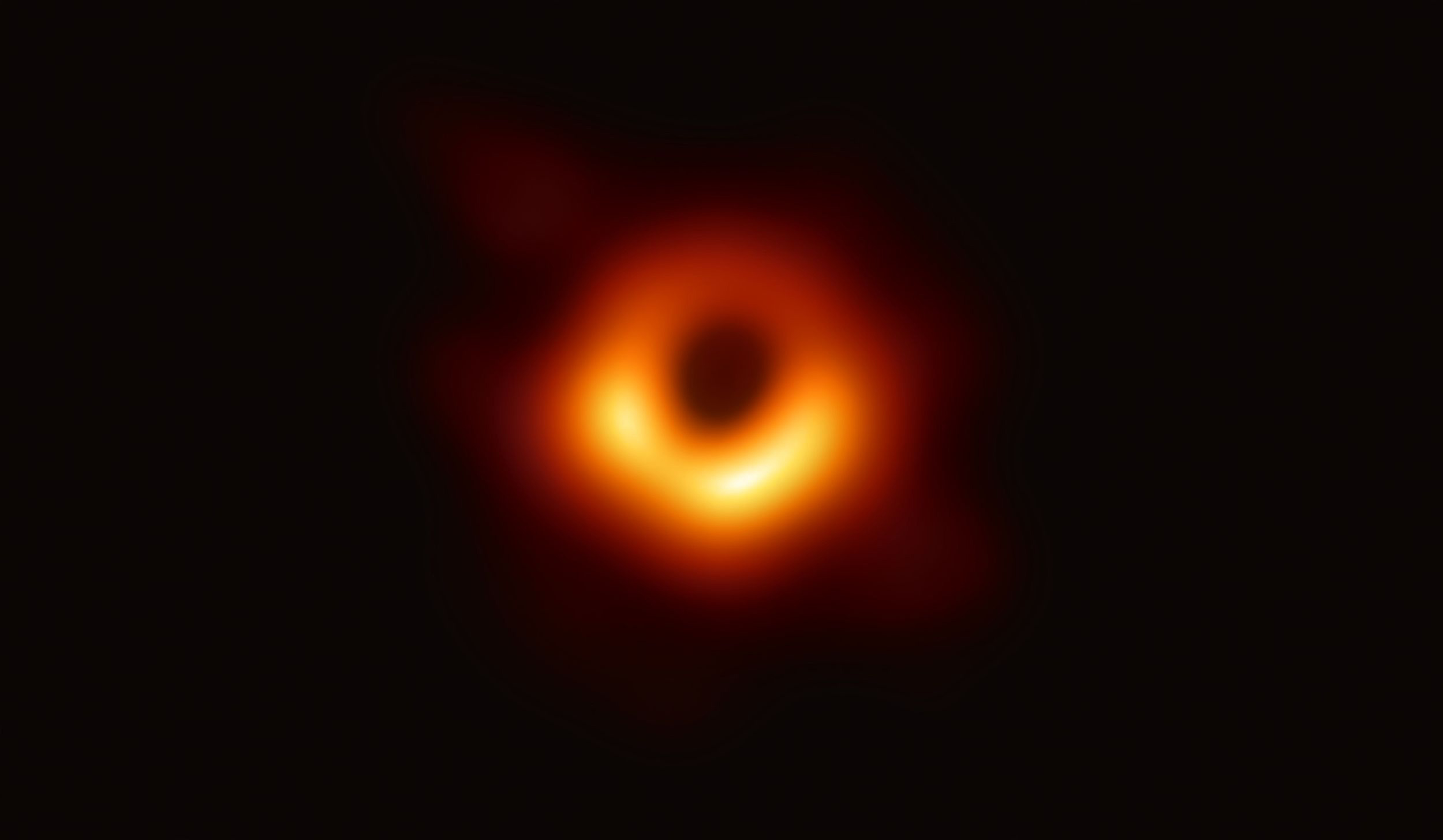关于史上第一张黑洞图像,你该知道这五件事

|
要拍摄吞噬光线的物体极其困难,但科学家们终于做到了。 事件视界望远镜(EHT)是一个国际团队,联合了世界各地的八个射电天文台,组合形成了巨大的望远镜,也成功捕捉到有史以来第一张黑洞的图像。周三上午,这张类似于《指环王》电影里索伦之眼的照片向全球公布。 图像中的物体位于Messier 87星系内,距离地球5500万光年,这是科学家们第一次有机会观察黑洞,不用再靠模拟。 此事肯定会变成办公室讨论的焦点,所以有必要了解一些相关知识,在跟同事讨论时可以随口插上几句,确保跟上进度。 什么是黑洞?宇宙中有多少? 黑洞是恒星坍塌后密度极大的残余物。黑洞的引力极强,任何物质或光只要离得太近都无法逃脱。 但黑洞也不像科幻电影里那样罕见。科学家估计,仅在我们生活的星系里就有1亿个黑洞,不过距离地球都很远,所以不必担心。 黑洞有多大? Messier 87黑洞很大。真的巨大。如果把太阳放在旁边,只是个小斑点(其实永远看不到这一画面,因为引力太大了,太阳的光无法逃脱)。 科学家们说该黑洞大小跟海王星轨道差不多,而海王星绕太阳转一周要200年。 黑洞对附近的行星有何影响? 黑洞内的行星很可能会被引力压碎,不过实际情形只存在理论模拟。如果一颗行星绕着黑洞运行但距离足够远,能够逃脱引力呢? 你最好抓稳什么东西再往下看。 麻省理工学院草堆天文台的研究科学家杰弗里·克鲁说,由于黑洞巨大,行星只用一周或更短时间便可绕行轨道一圈。不过该行星速度将达到光速。真想体验的话,最好带上晕车药。 拍摄黑洞的照片有多难? 集合八家天文台的射电望远镜一起工作都还不够。因为黑洞比宇宙中的任何射电来源都要“小和黑暗”,所以各天文台必须同步,各种条件也得恰到好处。 “拍到黑洞的图像还要放大,或者相当于从巴黎路边咖啡馆观测纽约一部手机上文本的‘角分辨率’。”官方人士表示。 下一步怎么做? 用科学家的话来说,目前已经收集到“海量”数据进行研究。每个天文台都接收到约100万GB的数据。而且从目前来看,各家希望继续合作。 “我们已经证明事件视界望远镜可以实现在视界面观测黑洞。”事件视界望远镜图像小组的联合负责人秋山一矩说。“这是黑洞天体物理学新时代的曙光。”(财富中文网) 译者:夏林 |
It’s pretty hard to photograph something that devours light, but scientists have finally managed to do so. The Event Horizon Telescope (EHT), an international consortium that linked eight radio observatories around the world to create an enormous telescope, has managed to capture the first-ever image of black hole. The shot, which resembled the Eye of Sauron from The Lord of the Rings films, was released globally Wednesday morning. Located inside the Messier 87, a galaxy that’s 55 million light years from Earth, the image of the cosmic phenomenon is the first chance scientists have had to observe a black hole, beyond their own simulations. It’s definitely the water cooler conversation of the day. So here are a few facts to drop on your coworkers, just in case you’re not fully up to speed on the project. What is a black hole? And how many are there in the universe? A black hole is the super-dense remnants of a collapsed star. The gravitational forces of them are so strong that nothing, neither matter nor light, can escape once it gets too close. They’re not as uncommon as science fiction films might have you believe, either. Scientists estimate there are 100 million in our galaxy alone, though none are close enough to earth to be a concern. How big is this black hole? The Messier 87 black hole is big. Really big. The sun would be a speck next to it (although you’d never know that, since the gravity pull is so strong the sun’s light couldn’t escape). Scientists say it’s about the size of Neptune’s orbit. And Neptune takes 200 years to revolve around the sun. How would it affect nearby planets? Exactly what would happen to a planet within the black hole is still theoretical, though it would likely be crushed by the gravity. But what if a planet was orbiting the black hole, yet far enough away to escape it’s pull? You’d have to hold onto something. Despite the black hole’s size, an orbiting planet would circumnavigate it in a week or less, says Geoffrey Crew, research scientist MIT’s Haystack Observatory. And that planet would be traveling at the speed of light. Bring Dramamine if you visit. How hard was it to get a picture of the black hole? This was more than getting eight facilities with radio telescopes to work together. Because a black hole is “infinitely smaller and darker” than any radio source in the sky, the observatories had to be synchronized and conditions had to be just right. “Making a picture of a black hole also requires a magnification, or ‘angular resolution,’ equivalent to reading a text on a phone in New York from a sidewalk café in Paris,” say officials. What’s next? Scientists gathered, in their own words, “gobs” of data to pore through. Each of the eight observation stations took in one petabyte of information, roughly 1 million gigabytes each. And, from the sound of things, they’re looking to keep working together. “We’ve demonstrated that the EHT is the observatory to see a black hole on an event horizon scale,” says Kazunori Akiyama, co-leader of the EHT imaging group. “This is the dawn of a new era of black hole astrophysics.” |











